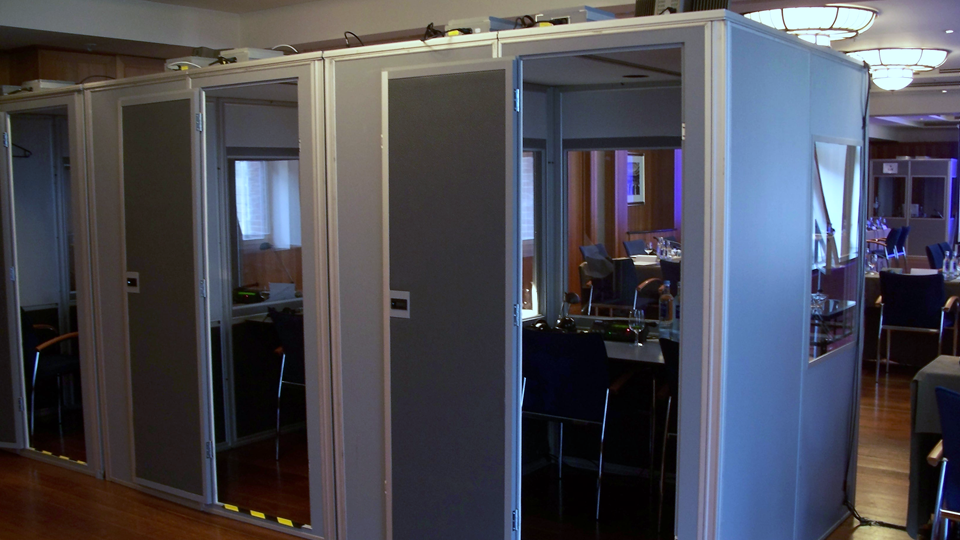Interpreters & Technology
“It is in language that expectation and fulfillment make contact.”1
– Ludwig Wittgenstein
Silkross ensures the interpreting team is directly connected to your conference activities, enabling each speaker and attendee to paint a complete picture of the conference, depicted in the words of their very own language—whether it’s a continuous back‑and‑forth discussion or a dynamic conference.
The interpreters’ workstations
Interpreters need a secure and protected environment where they can work freely and uninterrupted. An interpreter booth provides an appropriate space for this. We use portable booths. The number of conference interpreters (the size and structure of the interpreting team) is determined by the language combinations needed in the team, the topic, and the length of the conference. Only when the interpreting team has been formed can we finalize the number of interpreting booths and workstations required. There are typically two workstations per language combination.

The interpreters are provided with a good overview of the event here.
Photo: SILKROSS events
Simultaneous transmission of the interpretation
The speakers and audience receive their interpreted language version via one of the following means of transmission:
Portable, on site
The conference room is equipped with invisible infrared light, which serves as a carrier for the audio information. The speakers and guests select their language on their conference receiver. In one alternative, transmission is done via UHF radio communication.
Spoken during a theater performance or movie screening
Simultaneous interpretation is provided via a public address system or directly for each person using headphones. The original sound remains audible in the background. Theatrical interpreters are not only concerned with the specifics of the production and the vernacular translation of a piece, they are also sensitive to the perceptions, previous experiences, and listening habits of the audience.
Using a microphone system
A microphone system with integrated language channel selectors is connected directly to the interpreting system, forming a closed conference system.
Other conference systems
If you are organizing a multilingual video or remote conference, simultaneous interpreters can be integrated directly into the proceedings at each conference location. The conference locations are connected to the sites of the other interpreting systems in a secure system network. This method is also suitable in cases where there is limited space in the conference room. The interpreters then interpret directly in the interpreter booth from a separate interpreters room.
Transcribed interpreting
In interpreting into written form, the spoken words are reproduced directly as summarized text and incorporated into the visuals of the presentation using specific screens or as subtitles. Subtitles improve the understanding of audio/video content for people who have difficulty following the spoken language, e.g. non‑native speakers and people who are hard of hearing.
Interpreters providing output in written form only work in one language. Conference interpreters, however, orally translate the spoken words and the content of the conversation directly into the agreed‑upon target languages.
Keeping a record
If you would like to have a multilingual video recording, you can select the language channels for the original video from a context menu. In many cases, however, a multilingual audio recording is sufficient.
Direct & immediate
During in‑person meetings, linguists act as escort interpreters. No technology is needed for this form of interpretation. Interpreters speak directly to the person they are interpreting for.
